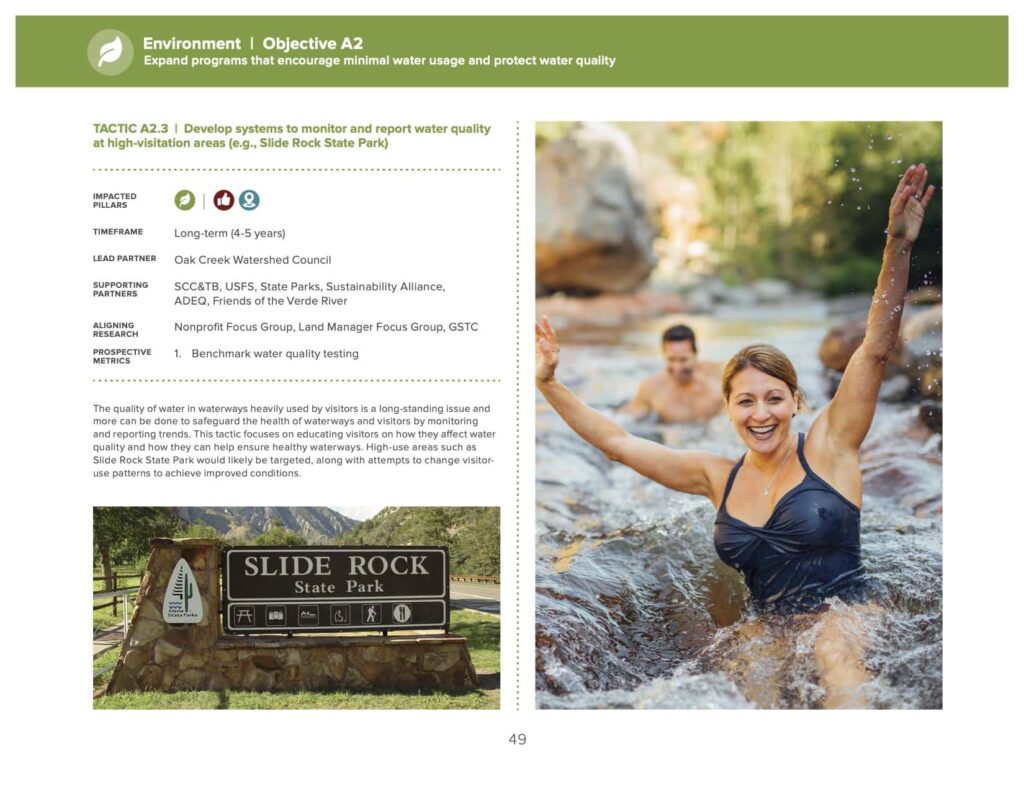[Above: Sedona red rocks, reflected. Photo credits throughout: Sedona Chamber of Commerce & Tourism Bureau]
 Prompted by a restive citizenry and a responsive city council, the DMO for the city of Sedona, Arizona, USA, now acts in effect as a destination stewardship council. That’s unusual. For part of our ongoing project to profile places with effective, holistic management, Sarah-Jane Johnson takes a deep dive into Sedona’s story. This is the sixth in the Destination Stewardship Center’s profiles of exemplary places with collaborative destination management in the spirit of GSTC’s Destination Criterion A1.
Prompted by a restive citizenry and a responsive city council, the DMO for the city of Sedona, Arizona, USA, now acts in effect as a destination stewardship council. That’s unusual. For part of our ongoing project to profile places with effective, holistic management, Sarah-Jane Johnson takes a deep dive into Sedona’s story. This is the sixth in the Destination Stewardship Center’s profiles of exemplary places with collaborative destination management in the spirit of GSTC’s Destination Criterion A1.
In Arizona’s Popular Red Rock Country, One CVB Put Community First and So Became Its Own Destination Stewardship Council
For decades the Arizona desert town of Sedona (population 10,000) has welcomed an annual average of 3 million tourists captivated by the landscape of red rock buttes, canyons, and pine forests. They can take advantage of distinctly Sedona offerings – an abundance of outdoor recreation such as iconic mountain biking and hiking, well-coordinated arts and culture including festivals, plus the famous Sedona “vortexes,” a staple for spiritual tourists.
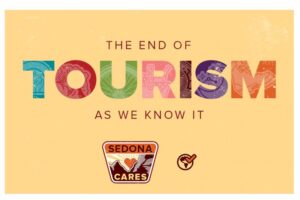 Eventually and perhaps inevitably, red-rock fever took grip: Sedona became a victim of successful marketing promotions, reaching a high point of being “loved to death” in 2016 when droves of Instagram-snapping tourists responded to marketing campaigns spotlighting the centennial of the National Park Service, closely followed by another for the Grand Canyon’s 100th anniversary. Visitors clogged Sedona streets with traffic and packed local trailheads, much to the dismay of local residents. Leaders at Sedona Chamber of Commerce and Tourism Board (SCC&TB), started to question how much tourism much was too much, and what kind of action was needed.
Eventually and perhaps inevitably, red-rock fever took grip: Sedona became a victim of successful marketing promotions, reaching a high point of being “loved to death” in 2016 when droves of Instagram-snapping tourists responded to marketing campaigns spotlighting the centennial of the National Park Service, closely followed by another for the Grand Canyon’s 100th anniversary. Visitors clogged Sedona streets with traffic and packed local trailheads, much to the dismay of local residents. Leaders at Sedona Chamber of Commerce and Tourism Board (SCC&TB), started to question how much tourism much was too much, and what kind of action was needed.
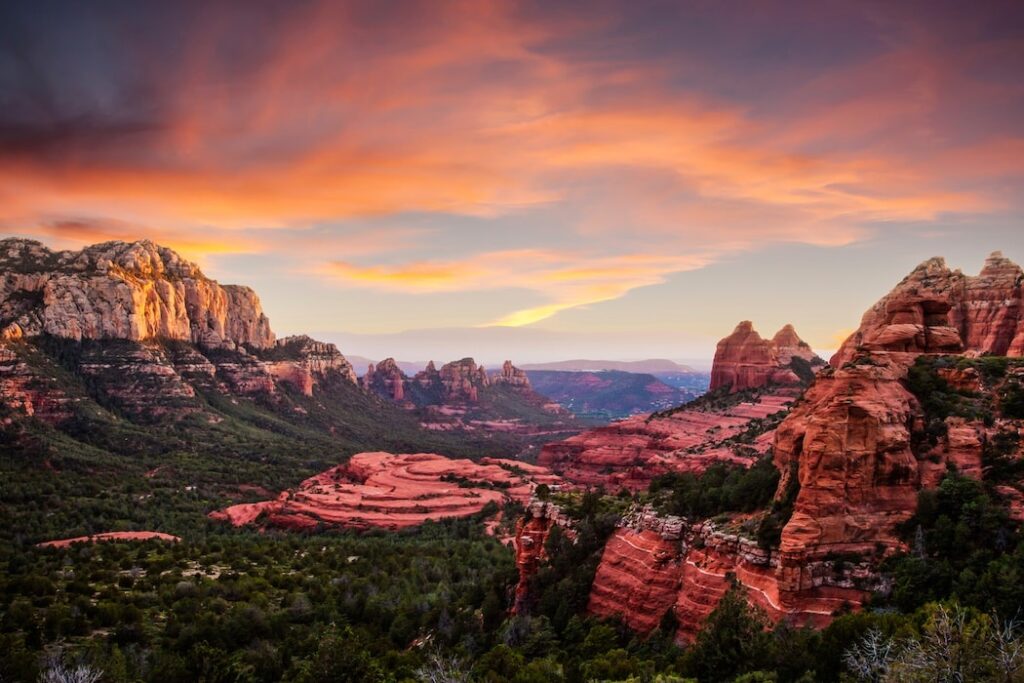
Context of Sustainability
The seeds for sustainability were actually planted 13 years before this watershed moment of overtourism, when Sedona teamed up with four regional DMO partners to form the Sedona Verde Valley Tourism Council, a collaborative effort to coordinate and promote the products and experiences of the entire Verde Valley. An anchor project for this regional partnership was creation of a National Geographic Geotourism Map Guide promoting regional culture, heritage, and ecological diversity, supported by a grant from the Walton Family Foundation, which was keen to create value around the Verde River and its watershed through awareness and education. Geotourism has been defined via National Geographic as “tourism that sustains or enhances the geographical character of a place—its environment, culture, geology, aesthetics, heritage, and the well-being of its residents.” As a tactical approach, the values informing Geotourism MapGuide became the first introduction to sustainability before any strategy was conceived.
The crunch of 2016 prompted SCC&TB to embark on a Global Sustainable Tourism Council (GSTC) assessment. Sedona scored 33 out of 41, placing itself as a leading destination in sustainable tourism management, and only one of two destinations in the United States to undergo assessment (the other being Jackson Hole, Wyoming). So began the Sedona DMO’s transition from Destination Marketing Organization to Destination Management Oorganization.
After the GSTC assessment results, SCC&TB began in 2017 an 18-month-long journey toward defining a concept for tourism sustainability. Working in partnership with the City of Sedona and external consulting teams from the Arizona State University and Nichols Tourism Group, the Sedona DMO engaged community, business, and visitors in a discovery phase and drafting of a final Sustainable Tourism Plan, presented to the City Council for approval in spring 2019.
By pursuing a mission to become a leader in sustainability, SCC&TB has become the closest thing to a real stewardship council for the destination, although not for the entire valley. The process of developing a solid sustainability plan has made community the focus of the organization’s updated mission statement: “to serve Sedona by making it the best place to live, work, play, and visit.” This statement reflects the strong relationships created within the community and the corresponding realization that the tourism mission is broader than economic benefits.
Organizational Structure and Governance
Unlike some other stewardship councils being reviewed thus far by the Destination Stewardship Center, Sedona manages sustainability differently. As the Sedona DMO reoriented to focus on management instead of marketing, it has been working alongside the local government, relying on sustainability support teams, and engaging with a community that has become increasingly skeptical of tourism.
“A lot of DMO’s don’t want to get into visitor management. . . .
But in fragile destinations it’s the only way to be successful.”
“There are really just a handful of communities that are trying to do management rather than marketing. [Sedona] is not a typical visitor and convention bureau. This is really unusual for a CVB,” said Jennifer Wesselhoff, CEO of SCC&TB in 2020. “A lot of DMO’s don’t want to get into visitor management. It’s a debate. Some think it’s a slippery slope. But in fragile destinations it’s the only way to be successful.”
SCC&TB is a membership organization. It is guided and overseen by a volunteer board of directors composed of local Chamber members elected by the Chamber membership. They include local businesses, nonprofit organizations, government, and community organizations. The Board employs a President/CEO who implements the policies established by the Board, administers Chamber programs, and supervises the Chamber’s budget.
To oversee the Sustainable Tourism Plan’s implementation and strategy, a Sustainable Tourism Advisory Committee (STAC) helps direct the City Council and the SCC&TB Board, while evaluating the Plan’s progress on an ongoing basis.
Success-tracking metrics for every tactic in the Plan have been refined through the direction of the Sustainable Tourism Action Team (STAT), a body of 22 members representing tourism businesses, the city of Sedona, US Forest Service, and numerous nonprofit organizations including Red Rock Trail Fund, the Sedona Verde Sustainability Alliance, and Keep Sedona Beautiful. SCC&TB’s President/CEO and marketing director spearhead the organization of the STAT and the STAC meetings and report on the status of the work to City Council every quarter.
Setting the agenda is a joint process between the City Council and the Chamber. The January city council work session sets priorities, and SCC&TB then drafts its plan of priorities to be approved by its own board and presented back to the City Council, which approves funding for tourism management and promotion. While there is no dedicated sustainability manager, many different Chamber and City staff members will have sustainability tactics attached to their job descriptions. The marketing director has oversight and coordination of scheduling meetings and tracking metrics.
To make sure SCC&TB is not the only one taking the lead, each tactic has a lead person or organization. Every lead is on the STAC and provides a quarterly update. The City has a part time sustainability coordinator, who also leads the City’s climate action plan, currently under development.

Community Engagement
Integrating the Sedona community into the process for developing and implementing the Sustainable Tourism Plan was – and continues to be – an unprecedented collaboration. Sedona Chamber describes how thousands of community members were involved over 18 months in planning, and several organizations continue to lead or support current tactics.
In the Plan’s development stage, the team conducted the following action steps for research surveying and feedback:
- Interviewed hundreds of residents.
- Analyzed hundreds of business-survey responses.
- Conducted focus groups with area non-profit organizations.
- Brought land management agencies together.
- Talked with tourism industry companies operating tours, lodging facilities, and restaurants.
- Included local arts and spirituality communities.
- Collaborated with governments and industry ranging from Arizona Department of Transportation (ADOT) and the Forest Service to Arizona State Parks (APS.)
- Provided status updates through regular communication tactics including blog posts, social media, radio spots, guest columns, and presentations. Public meetings were held to review findings and get more input.
Beyond the Plan’s development, the SCC&TB ensures continuing engagement with the community about sustainability and the Plan itself. The STAC advisory council is made up of residents and local business owners, who determine the overarching metrics of success for the entire plan.
The DMO’s communication with residents is frequent, including updates to the community on the Sustainable Tourism Plan via e-blasts and local media op-eds. “We talk about the STP all the time. We constantly remind the community of how the things we are doing align with the Plan,” said Wesselhoff.
Managing Sustainable Tourism
Sedona’s community-based sustainability plan has been divided into four strategic pillars that list objectives designed to implement sustainability:
- Environmental Objectives: Lead the tourism industry in implementing sustainability principles, positioning Sedona as a national and international leader in destination stewardship.
- Implement new waste prevention, reduction, and diversion strategies focused on visitors and their impacts in the Sedona region.
- Expand programs that encourage minimal water usage and protect water quality.
- Create new programs to help businesses and visitors moderate energy use and use alternative forms of energy.
- Launch initiatives that lessen impacts on lands (including noise, air, and light pollution), and stimulate efforts for long-term sustainability.
- Educate and engage businesses and visitors on sustainability initiatives, encouraging visitors to be sensitive guests during their stays.

- Resident Quality of Life Objectives: Protect and enhance the quality of life by mitigating negative impacts of tourism.
- Implement new infrastructure and multi-modal solutions to facilitate visitor traffic flows and enhance access to key destinations.
- Expand use of technology to help solve transportation challenges.
- Deepen engagement with Sedona residents, expanding their knowledge of tourism and efforts to manage it so as to achieve an effective balance.
- Develop new sustainability-focused experiences that resonate with both Sedona residents and visitors.
- Manage current and future accommodations in ways that increase long-term sustainability.
- Launch initiatives to maintain local quality of life by lessening undesirable tourism impacts on residents including noise, air, and light pollution.
- Quality of the Economy Objectives: Shape the Sedona economy in ways that balance its long-term sustainability and vibrancy.
- Monitor and adjust levels of economic activity for needy periods and moderate congestion by dispersing visitors.
- Expand interagency collaboration among diverse Sedona organizations.
- Monitor and adjust tourism marketing to achieve a balance between quality of life and a healthy economy.
- Pursue innovative approaches to employee housing and training.
- Visitor Experience Objectives: Continue to provide an excellent visitor experience that highlights Sedona’s sustainability values and keeps visitors coming back.
- Deepen understanding of existing experiences, how best to access them, and how to apply sustainable practices while visiting.
- Work to disperse visitors across the broader Verde Valley region to help moderate congestion at key Sedona experiences.
Activities
Some specific destination programs which have been developed prior to or grown since the implementation of the Sustainable Tourism Plan include:
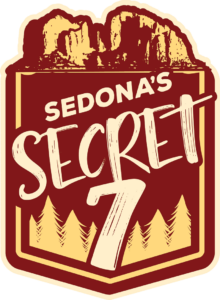
- Walk Sedona which encourages people to get out of their cars in an effort to decrease road congestion.
- Sedona Secret 7 which encourages visitor dispersion to less populated areas.
- The Sedona Cares visitor pledge is an educational tool to encourage better visitor behavior.
- An initiative led by Sedona Lodging
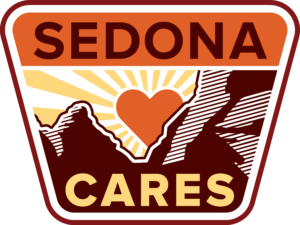 Council to providephotos and b-roll footage oflesser known areas and encourage them to stop using photos of “over loved” areas.
Council to providephotos and b-roll footage oflesser known areas and encourage them to stop using photos of “over loved” areas. - Front-line worker and concierge training to discourage promotion of overly used areas.
- Sedona Recycling Quiz designed for visitors and locals to understand how to manage trash.

Additionally:
- Visit Sedona promotes voluntourism opportunities to visitors while also offering coordination and promotion for local businesses and organizations.
- Sedona has created a Love Our Locals campaign to drive local businesses. This campaign provides an opportunity to connect residents and visitors to locally owned and operated businesses, promote “made in Sedona” products, offer promotions and discounts to local residents.
- Green meetings are a direct alignment of the Sedona brand, and care for the environment.
Areas of Sustainability and Stewardship
The implementation part of the tourism sustainability plan contains more than 30 tactics. Each is tracked and managed according to these parameters:
- Description: An explanation of the tactic providing insight and key elements.
- Timeline – How long it will take to achieve: Short (12-18 months), Mid (2-3 years), Long (4-5 years).
- Pillars affected: If more than one objective is involved.
- Lead partner: The entity (or entities) primarily responsible for moving the tactic forward.
- Supporting partners: Other partners who will help implement the tactic.
- Prospective metrics: Examples of the types of metrics and targets (if appropriate) that will help evaluate the effectiveness of the tactic.
Below are four examples of tactics from the Sustainable Tourism Plan, highlighting the level of collaboration, planning, and measurement.
Funding
Implementation of SCC&TB Sustainable Tourism Plan is supported with appropriate funding for each of the four pillars of the Plan. The City of Sedona provides primary funding for SCC&TB from the collection of sales and lodging tax. Visitor spending makes up 77% of all sales tax collected. Sales and bed tax rates are each currently at 3.5%. In 2014, Sedona’s lodging industry agreed to increase bed tax by .5% on the condition the SCC&TB would receive 55% of the total collections. A statewide change in law to allow short term rentals in Arizona significantly contributed still more to the budget, as the 1,000 short term rentals such as Airbnb in the area also pay bed tax. This pushed the tourism budget from $500,000 in FY14 to $2.4 million in 2019.
As a result of the COVID-19 global pandemic, the SCC&TB’s FY21 budget is expected to focus on rebuilding the economy. The budget in FY21, as allocated by sustainability objectives, shows a lop-sided tilt toward post-Covid economic recovery:
- Economy $1,800,000
- Environmental $171,000
- Quality of Life $271,000
- Visitor Experience $27,000
Measures of Success/ Results
Transparent tracking of the impact of the sustainability process is key. Using each objective, SCC&TB has developed baseline data points and measures the following, presented publicly and also reported into the City:
- Environment—through perception of sustainability. Metrics include volume of trash collected, number of miles maintained by trail keeper resources, number of visitors signed on with educational programming.
- Resident Quality of Life—a citizen survey is conducted by the City to measure perception from locals of quality of life.
- Quality of the Economy—sales and bed-tax collections, measured throughout the year and not just in key tourism seasons.
- Visitor Experience—visitor satisfaction, via survey, and whether it’s going up or down.
Some other key sustainability achievements in Sedona include:
- Fly Friendly: In 2020, helicopter tours operators ceased overflights within Sedona’s city limits and over neighborhoods, sensitive prehistoric sites and resorts outside the city limits as part of a new Fly Friendly policy.
- Transportation Improvements: In 2020, the City of Sedona completed Uptown traffic improvements, making vehicle and pedestrian flow more efficient, easing congestion, and contributing to the area’s aesthetic appeal; roundabouts that eliminate U turns and give access to new off-street parking; and a median with locally designed artwork that prevents mid-block pedestrian crossing and left-hand turns. Like Fly Friendly, the Uptown Improvements address all four pillars of sustainability.
- Sustainability Certification: Low water use, energy conservation, recycling and using local products are hallmarks of sustainable business operations. Dozens of Sedona-based businesses and government offices have achieved sustainability certification, as determined by the Sustainability Alliance, a Sedona Verde non-profit organization that leads sustainability projects.
- Governor’s Award: In 2019, the SCC&TB was honored with the Governor’s Award for Outstanding Arizona Cultural and Historic Preservation for its efforts in creation of the Sedona Sustainable Tourism Plan. The Award recognizes the year’s “most significant contribution to the cultural and historic preservation of the natural, cultural or aesthetic legacy of Arizona that inspires visitation to the state.”

Final Commentary
Sedona’s effort to research and create a truly comprehensive plan stands out against other Destination Management Organization efforts for several reasons. There are resources; there is a solid partnership with the City and elected officials; plus there has been intense dialogue and listening within the community to create a truly community-based sustainability plan. There was an 18-month planning process, with investment, resources, and then structure to see out the objectives. Wesselhoff believed the plan is solid for five years, with a possible few adjustments to tactics around climate change to be added in the future. She would expect a further GSTC assessment toward the end of the 5-year plan, as a means to benchmark overall progress.
Also striking is the way this plan has been designed to build tourism around the needs of the community, placing residents first and foremost. The planning process has helped the DMO shift its focus from the visitor to the resident as the number one client, including local business owners.
From listening came soul-searching for Wesselhoff. “Previously I was the biggest advocate and cheerleader for tourism. I believed it was really good for our community – the benefits drastically outweighed the inconveniences of tourism. But I don’t think I honestly and genuinely listened to complaints, because they were [merely] inconveniences, and [because] 10,000 people depended on tourism for their jobs – every single resident could have a job in tourism if they wanted to. This process allowed me to embrace the tradeoffs in a more thoughtful way and consider how we can positively impact those negative tradeoffs.”
Wesselhoff also believes the Sustainable Tourism Plan has already led to significant tactical wins for the local community. She cited the Fly Friendly program’s no-fly zone for air tours over residential areas – one of the legacies she will leave from her personal efforts as leader. For 18 months, the City and County (which operates the airport), tour operators, and other stewardship entities in the community came together as partners to create solutions to control helicopter noise. “Helicopter noise has been a pinch-point for locals,” she said. “Without the Sustainable Tourism Plan we never would have gotten there; it provided the framework to say ‘this is what the community wants.’”
While Wesselhoff was readying at the time of this 2020 interview to move into a new role as CEO at Visit Park City in Utah, she felt confident that Sedona’s stewardship efforts will continue, in large part because the Plan is positioned as something the entire community has bought into, bigger than just one person or one organization.
Having steered the process to create what she feels is a truly community-oriented tourism plan and meaningful engagement with residents, Wesselhoff offered words of wisdom for other DMOs: Engage with residents and recognize your potential role as community builders: “We need to listen to our residents as much or more than we listen to our visitors or our businesses. I learned so much through this process. The value of listening to that perspective was really meaningful.”
Appendix
The following community partners participated in the Plan development process:
Arizona Department of Environmental Quality
Arizona Department of Transportation
Arizona Game and Fish Department
Arizona Public Service
Arizona State Parks and Trails
City of Sedona City Council
Coconino National Forest
Friends of the Forest Sedona
Friends of the Verde River
Keep Sedona Beautiful
Local First Arizona
National Park Service – River and Trails
Northern Arizona University Climate Program
Northern Arizona Climate Alliance
Northern Arizona Council of Governments
Oak Creek Watershed Council
Red Rock State Park
Red Rock Trail Fund
Sedona Airport Authority
Sedona Compost
Sedona Events Alliance
Sedona Heritage Museum
Sedona Lodging Council
Sedona Mountain Bike Coalition
Sedona Recycles
Sedona Sustainability Alliance
Sedona Verde Valley Tourism Council
Sedona Verde Valley Sustainability Alliance
US Fish and Wildlife Service
US Forest Service
Verde Front Collaborative


